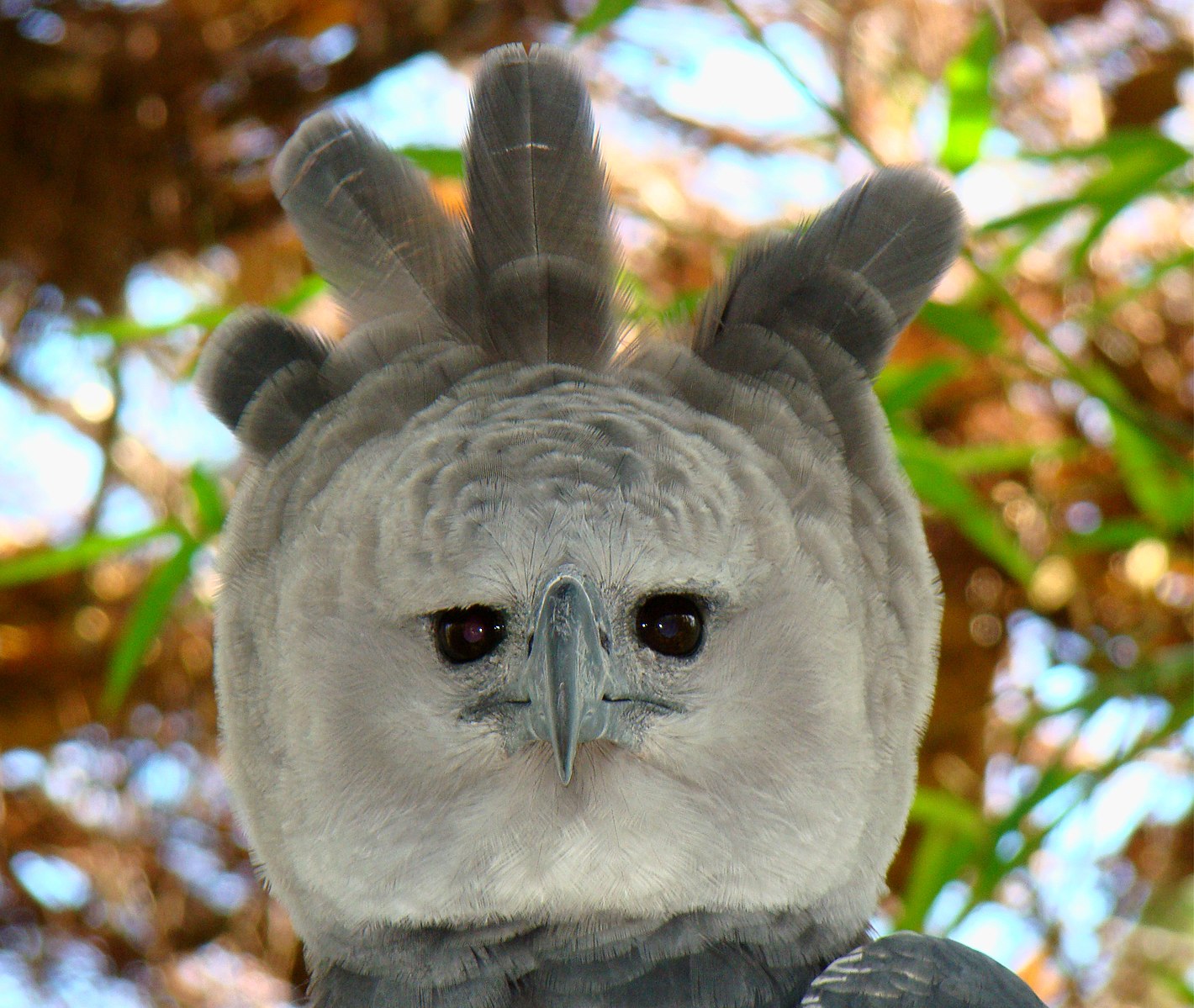The Harpy Eagle and the Philippine Eagle are two of the most impressive and awe-inspiring birds of prey in the world. These magnificent raptors are known for their immense size, power, and hunting prowess, making them the subject of fascination for birdwatchers, naturalists, and conservationists alike.
The Harpy Eagle: The Apex Predator of the Rainforests
The Harpy Eagle (Harpia harpyja) is a true giant among eagles, with a wingspan that can reach up to 7 feet and a weight of up to 20 pounds. This formidable raptor is native to the tropical rainforests of Central and South America, where it reigns as the apex predator. Its distinctive appearance, with a gray head, black and white feathers, and a powerful hooked beak, is a testament to its incredible hunting abilities.
One of the most remarkable features of the Harpy Eagle is its massive, heavily built legs and talons. Its talons can measure up to 3.5 inches in length and are capable of exerting a force of up to 500 psi, making them the most powerful weapon in any living raptor. This incredible grip strength allows the Harpy Eagle to easily capture and subdue its prey, which can include monkeys, sloths, and even small deer.
Hunting Strategies of the Harpy Eagle
The Harpy Eagle is a patient and stealthy hunter, using its exceptional eyesight and hearing to locate its prey from high in the canopy. Once it has spotted its target, the eagle will swoop down with incredible speed and power, using its massive talons to deliver a lethal blow. Its powerful beak is then used to tear the prey apart and consume it.
Despite its size and strength, the Harpy Eagle is also known for its agility and maneuverability, allowing it to navigate the dense rainforest with ease. This combination of size, strength, and agility makes the Harpy Eagle a truly formidable predator, with few natural threats in its environment.
The Philippine Eagle: The Rarest and Most Endangered Eagle
 Image source: Harpy Eagle by Bjørn Christian Tørrissen
Image source: Harpy Eagle by Bjørn Christian Tørrissen
In contrast to the Harpy Eagle, the Philippine Eagle (Pithecophaga jefferyi) is a smaller, yet no less impressive, bird of prey. Endemic to the Philippines, this magnificent eagle is considered one of the rarest and most endangered birds in the world, with only around 400 individuals remaining in the wild.
The Philippine Eagle is slightly smaller than the Harpy Eagle, with a wingspan of up to 6 feet and a weight of up to 17 pounds. However, it is no less impressive, with its distinctive dark brown feathers, white underbelly, and shaggy crest of feathers on its head. Its blue-gray beak and piercing blue eyes add to its striking appearance.
Hunting Prowess of the Philippine Eagle
Like the Harpy Eagle, the Philippine Eagle is a skilled and powerful hunter, primarily feeding on monkeys, flying squirrels, and other small mammals. Its sharp beak and powerful talons make it a formidable predator, capable of taking down prey much larger than itself.
The Philippine Eagle is also known for its impressive hunting techniques, which include soaring high above the forest canopy to spot its prey, and then swooping down with incredible speed and precision to make the kill. Its agility and maneuverability in the dense forest environment are truly remarkable.
Conservation Efforts for the Harpy Eagle and Philippine Eagle
Despite their impressive size and hunting abilities, both the Harpy Eagle and the Philippine Eagle face significant threats to their survival. Habitat loss, hunting, and other human activities have led to a decline in their populations, with the Philippine Eagle being particularly vulnerable due to its limited range and small population size.
Conservation efforts are underway to protect these magnificent birds and ensure their survival for future generations. In the case of the Harpy Eagle, organizations like the World Wildlife Fund and the Peregrine Fund are working to monitor and protect the species, as well as educate local communities about the importance of preserving the rainforest habitat.
For the Philippine Eagle, the Philippine Eagle Foundation and other conservation groups are working tirelessly to study the species, protect its remaining habitat, and raise awareness about the need to conserve this unique and irreplaceable bird of prey.
Through these efforts, and with the continued support of the global community, there is hope that the Harpy Eagle and the Philippine Eagle will continue to soar high above the forests they call home, inspiring awe and wonder in all who are fortunate enough to witness their majestic presence.


